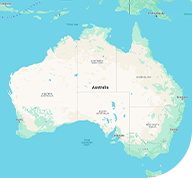OVERVIEW
Workplace accidents can cost time, money, and safety. This blog shares 3 smart, practical tips to help you stay ahead of hazards in 2025. From better communication to smarter setups, these strategies can make a big difference whether you’re in food service, healthcare, or manufacturing.
Work-Related Fatalities in 2023

Unfortunately, 200 Australian workers lost their lives due to workplace incidents in 2023, a slight increase from 195 in 2022. The most common cause of workplace fatalities remains vehicle incidents. These incidents account for 42% of fatalities. Alarming trends, such as the rise in fatalities from falls (up by 71% since 2022), show that certain risks are escalating.
Fortunately, the overall fatality rate has decreased by 19% since 2013. This shows encouraging results in long-term improvements implemented over the years in safety practices. However, the data reminds us that every statistic represents a person, a family, and a community affected by preventable incidents.
Industry-Specific Risks

Six industries accounted for 76% of workplace fatalities and 61% of serious workers’ compensation claims: Agriculture, Forestry, and Fishing (highest fatality rate at 9.2 per 100,000 workers)
1. Transport, Postal, and Warehousing
2. Construction
3. Manufacturing
4. Public Administration and Safety
5. Health Care and Social Assistance
The number of fatalities in the Construction industry in 2023 (45) was 36% higher than the 5-year average for this industry (33). However, the number of fatalities in the Agriculture, forestry, and fishing industry in 2023 (27) was 25% lower than the 5-year average (36).
Machinery operators and drivers recorded the highest fatalities by occupation. This data underscores the importance of targeted safety initiatives in these high-risk industries.
Increasing Mental Health Claims
Mental health conditions are an increasingly significant concern. These claims comprise 10.5% of all serious workers’ compensation cases, with a staggering 97.3% increase over the past decade. Workers affected by mental health conditions lose over five times more work time than those with physical injuries, emphasizing the need for better mental health support systems in the workplace.
Improving Work Health and Safety
While Australia’s injury rate of 3.5% is well below the global average of 12.1%, the human and economic impact of workplace injuries and illnesses remains substantial. With over 139,000 serious workers’ compensation claims in 2023, organisations must prioritise effective workplace safety strategies, including:
- Preventing body-stressing injuries, the leading cause of claims (32.7%)
- Addressing hazards like falls, slips, and being struck by objects
- Fostering safe environments through robust policies, training, and technological solutions
A collaborative effort between industries, policymakers, and workers is vital to addressing emerging risks, including those posed by automation and other technological advancements.
Tips to Avoid Accidents in the Workplace

1. Safety Audit: Regularly perform safety audits to pinpoint risks and ensure compliance with safety standards. These help create a safer environment by identifying & addressing hazards before they lead to accidents.
2. Safety Product Refresh: Update your safety gear and equipment periodically to ensure it’s reliable and meets the latest safety requirements. Outdated products can fail when needed most, so keeping them current is essential for workplace accident prevention.
3. Supplier Offering Certified and Innovative Solutions: Choose suppliers with certified products and cutting-edge safety solutions. Reliable suppliers provide peace of mind and innovative tools to effectively prevent accidents.
Conclusion
While progress is evident, the journey toward a safer work environment for all Australians continues. Every improvement in work health and safety translates to saved lives, injury prevention, and healthier workplaces. Whether you’re an employer or an employee, fostering a culture of safety is a shared responsibility.































